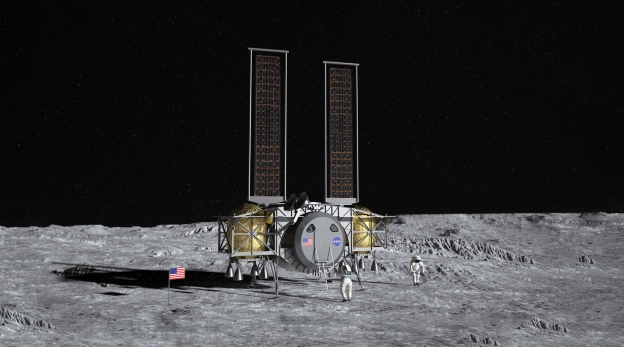U.S. government and aerospace-industry officials are removing decades-old barriers between civilian and military space projects, in response to escalating foreign threats beyond the atmosphere. The Pentagon and the National Aeronautics and Space Administration (NASA) are joining forces to tackle efforts such as exploring the region around the moon and extending the life of satellites. Many details are still developing or remain classified. Driving the changes are actions by Moscow and Beijing to challenge American space interests with antisatellite weapons, jamming capabilities and other potentially hostile technology. Eventually, according to government and industry officials briefed on the matter, civil-military cooperation is expected to extend to defending planned NASA bases on the lunar surface, as well as protecting U.S. commercial operations envisioned to extract water or minerals there…
Large and small contractors are maneuvering to take advantage of opportunities to merge military and nonmilitary technologies. They include established military suppliers that already have a foot in both camps, such as Northrop Grumman, the Dynetics unit of Leidos Holdings, and Elon Musk’s Space Exploration Technologies Corp. Smaller companies such as Maxar Technologies Holdings, closely held robotic-lander maker Astrobotic Technology, and small-satellite producer Blue Canyon Technologies, recently acquired by Raytheon Technologies, also seek to diversify in the same way…
The U.S. astronaut corps always has included many military officers, some previous NASA scientists quietly shared data with military counterparts and NASA’s now-retired Space Shuttle fleet was supposed to launch Pentagon satellites. But today, veteran industry and government experts describe the cooperation as much more extensive, covering burgeoning capabilities such as repairing and repurposing satellites in orbit, or moving them around with nuclear propulsion. Intelligence agencies are more involved than ever in leveraging civilian technology, including artificial intelligence, robotic capabilities and production know-how.
Excerpt from Pentagon, NASA Knock Down Barriers Impeding Joint Space Projects, WSJ, Feb. 1, 2021







